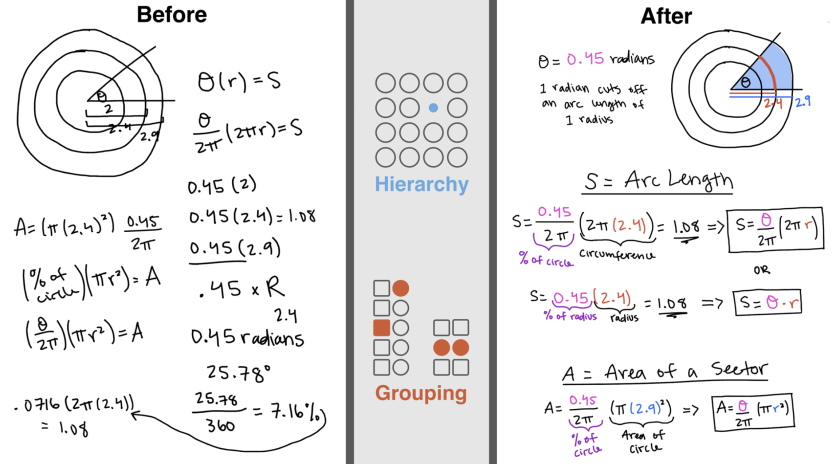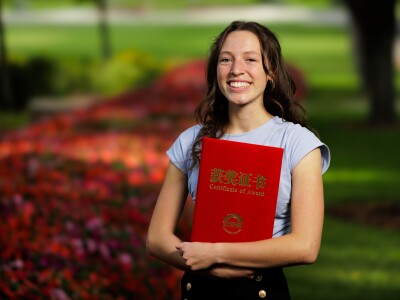
From developing creative ways to teach math to planting trees along the Provo River, recent scholastic and civic projects from BYU students prove that an education that integrates faith, emotion, and intellect produces leaders with devoted hearts and purposeful souls. Here’s a look at some student-led research and projects that are making an impact.
Anna Monson (College of Life Sciences and Civic Engagement minor)
Anna Monson, a biology student with a minor in civic engagement, combined her passions for a capstone project recently by organizing a group of volunteers to plant willows along the Provo River Delta. Dozens of volunteers came together to plant hundreds of willows, which will grow to shade and stabilize the new banks.
Monson says her time at BYU helped her develop an appreciation for God’s creations and she wants to do her part to care for the earth and strengthen ecosystems. The newly planted willows will provide lifesaving hiding places for young June sucker fish in critical rearing habitats.

“It was great to be involved in a project that is in our community and do our part to help protect a fish that is native to Utah Lake and its tributaries,” said Monson. “The Provo River Delta is right up against beautiful trails and this project is adding to the recreational impact of the area. It’s really becoming a place with beautiful scenery.”
Organizing the project required Monson to become familiar with local conservation efforts. She attended Provo’s Sustainability Council meetings, met with civic leaders, and partnered with BYU’s Sustainability Office to understand how she could help make an impact and recruit others who were interested in the project.
“I’ve learned from the example of caring and involved professors who love the community and who are involved in the community,” said Monson. “I’ve seen a lot of my professors share their knowledge and expertise without seeking praise or recognition.”
Abbie Speed (College of Fine Arts and Communications)
Abbie Speed never thought she’d be a BYU student but says her BYU experience changed her life. As an undergraduate transfer student, Speed worked closely with several professors on various research projects – an experience she said she wouldn’t have had at her previous school.
Speed, who will soon graduate with a master’s degree in mass communications, has been researching video game addiction to better understand the impact media has on individuals and families.

In addition to considering the amount of time spent playing video games, Speed’s research analyzed the different motivations of gamers to better understand why video game addiction develops. She found three main motivations for video game engagement: achievement (wanting to win awards in the game), immersion (playing video games for entertainment and distraction from daily life), and social interaction (playing for interaction with other players).
Speed’s research found that while gamers who played every day of the week were more likely to be addicted, their motivation to play video games also influenced their addiction level. Those who were motivated to play for social interaction with others were less prone to develop an addiction than those who played for other reasons.
“If you’re logging online to play games and treating it as a standing appointment with friends and then getting back to your daily life after that appointment ends and you’re not feeling compelled to play, you’re not developing an addictive behavior,” said Speed.
Speed hopes her research can help parents who are concerned by their children’s video game habits understand their motivations for playing games and help them find other activities where they can find achievement and immersion.
“Instead of focusing so much on getting young people to play less, we might focus on having conversations to understand why they’re playing and what they’re getting out of video games and help them discover other outlets to meet these needs and round out their personality so that they’re not consumed by video games,” she said.
Jennifer Canizales (College of Physical and Mathematical Sciences)
Analytics and art – two skills that go together like peanut butter and pickles, but for BYU student Jennifer Canizales, that isn’t the case. Canizales, who will soon graduate with a master’s degree in math education, has always loved flexing the analytical side of her brain to solve complex equations. But she’s equally gifted as an artist and enjoys utilizing the creative side of her brain – a unique combination.
After a student teaching internship, Canizales pondered ways to make teaching math more exciting and more effective. “Like many students, I’ve been in math classes where it’s hard to follow all of the information that’s up on the board,” she said. “I started to wonder how I could combine my passion for design and math to make board work better.”

Canizales dove into existing research on pedagogy and studied Gestalt theory and Cognitive Load theory to better understand how students learn. Drawing on principles of design; like using color to connect recurring themes in equations and grouping related formulas together, she created new board plans for math teachers to make instruction visually appealing and easier to understand.
She’s tested her board work model in undergraduate math classes at BYU with promising results. Students reported lower cognitive load and better recall when being taught with design-based board work. Students also said they felt like they were receiving higher-quality instruction from the teacher.
“By applying design principles to board work we can lower the extraneous cognitive load for students and increase their ability to understand the math,” she said.
Canizales has presented her findings at educator conferences across the nation and hopes to publish her research and empower more teachers with resources to plan effective board work lessons.



